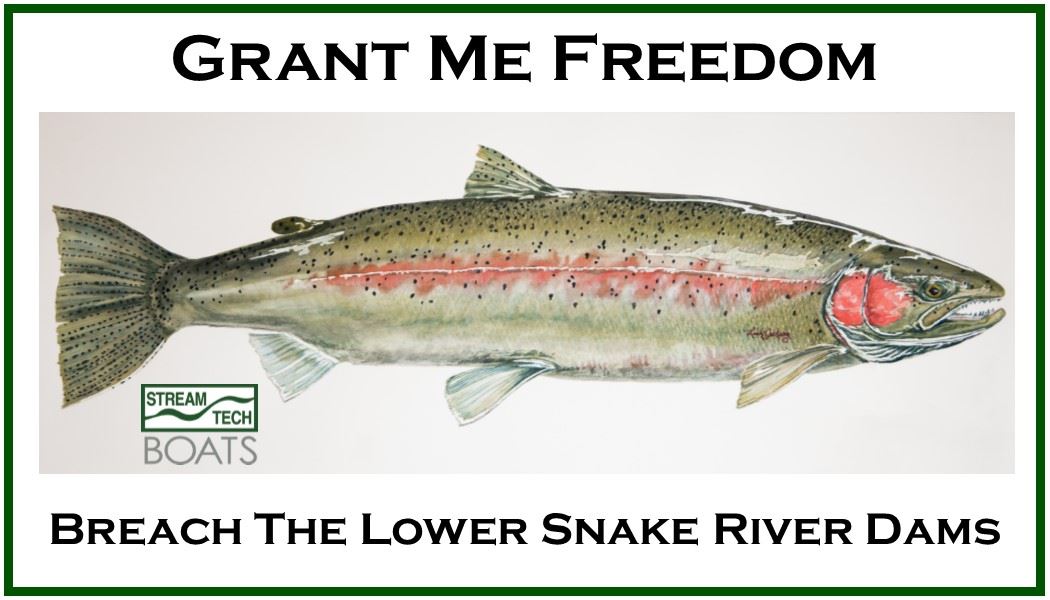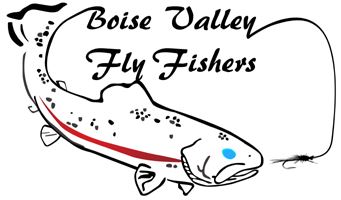I just got back from swinging a fly for steelhead on the Clearwater river. In my 30 years of fishing for steelhead, the last few years have been the toughest I have experienced. Since retiring from HP I have been able to log way more hours chasing steelhead but have only caught a small number of fish compared to just 10 years ago when I fished a fraction of the hours.
 I had beautiful Fall days on the Clearwater: The sun was bright and the Clearwater river was low and clear. But there were not many fish to be found, and everyone I talked with had the same experience. I expect the rain this week will pull some fish into the river and fishing will (hopefully) improve. I did manage to swing one up on a small pink Klamath Intruder--a 35" hen that was holding in some boulders at the base of a riffle. What a thrill to connect with something that WILD! (Sorry, no Fish Photo. I held her in the water for a brief moment to revive, thanked her, and sent her back on her way.)
I had beautiful Fall days on the Clearwater: The sun was bright and the Clearwater river was low and clear. But there were not many fish to be found, and everyone I talked with had the same experience. I expect the rain this week will pull some fish into the river and fishing will (hopefully) improve. I did manage to swing one up on a small pink Klamath Intruder--a 35" hen that was holding in some boulders at the base of a riffle. What a thrill to connect with something that WILD! (Sorry, no Fish Photo. I held her in the water for a brief moment to revive, thanked her, and sent her back on her way.)
Talking with Rick Williams yesterday, he had a similar experience swinging a fly on the Salmon River near Riggins. He reported that he had nary a bump or swirl...and that it felt like he was fishing an empty river.
While swinging I had plenty of time to think about the plight of the steelhead (and salmon). The speaker for BVFF's last club meeting was fisheries expert Dr. Rick Williams, who painted a grim picture of the future of anadromous fish in Idaho unless big changes occur soon to the river and management. The BIG take-away messages I got from his talk were:
- In order for a species to survive, it has to produce at least 2 offspring that can reproduce to replace the parents. Reproduction metrics show that the steelhead and salmon in basins below the four Lower Snake dams are meeting this criteria. The ones above the Lower Snake dams are not. Over time, this pattern leads to extinction.
- Spawning habitat, while important, is not the limiting factor in Idaho. Tracking spawning habitat use in the M.F. Salmon drainage you can see that on most years only a fraction of the spawning habitat gets used. I dug up some hatchery smolt release data from Idaho and found that they pretty much release the same number of smolts each year, regardless of the previous year's return, which again emphasizes the number of smolts produced is not the limiting factor.
- Idaho steelhead and salmon smolts migrating downstream to the ocean experience a high mortality rate. Every dam has an incremental mortality rate and slows the smolt's outbound migration time. The biological process of smolting has a time restriction and Idaho smolts have a long way to travel to make it to the ocean. If we want to save Idaho salmon and steelhead then we have to get those smolts to the ocean quicker and with a higher survival rate. I wish there was a way to open up the locks on the Lower Snake dams to turn it into a more free flowing river during April and May when the smolts are ocean-bound. But the dams weren't designed to do that.
- Idaho has the best high-elevation spawning habitat in the entire Columbia basin, which is important as the climate warms our rivers. Improving salmon and steelhead returns to Idaho is critical to not only improve our runs, but to the future of Salmon and Steelhead in the Columbia Basin.
- Idaho Congressman Mike Simpson's plan recognizes that in order to succeed, not only do we need to replace the function of the Four Lower Snake Dams, but we need to recognize and replace the dependencies that they have created. This really resonated with me after recently reading Blaine Harden's book, "A River Lost: The Life and Death of the Columbia", which gave me new insights into the subsidies created by the dams. I encourage you to check it out of the local library. It is an enjoyable read and you will learn something.
BOTTOM LINE: If we want to save Salmon and Steelhead for future generations, then we must return the Lower Snake River to a free-flowing river and get Idaho smolts safely to the ocean. Time is not on our side in this issue. Please share this message and support Congressman Simpson's plan.
My thanks to Link Jackson for his "Grant Me Freedom" artwork.


